
Historical Markers
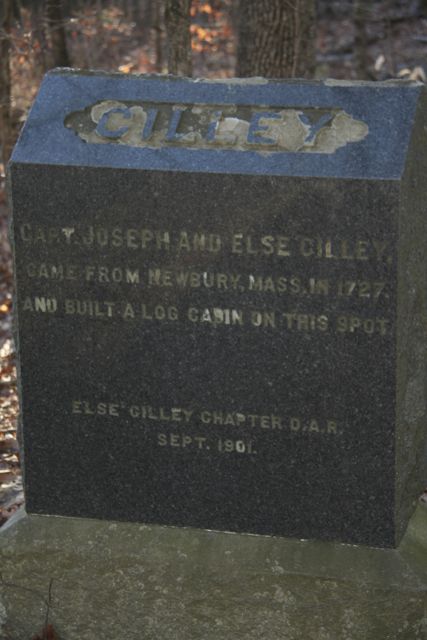 Cilley Log Cabin Site
Cilley Log Cabin Site
Under the regency of Miss Elizabeth W. Cilley (1898-1901), the chapter erected a marker on the site of the log cabin in Nottingham, built in 1722 by Captain Joseph and Else Cilley. The marker, located on Rattlesnake Hill, is easily viewed 8/10 of a mile to the right of the Minuteman Monument in Nottingham Square. The inscription reads, "Capt. Joseph and Else Cilley, came from Newbury, Mass. in 1727, and built a log cabin on this spot. Else Cilley Chapter D.A.R. Sept. 1901."
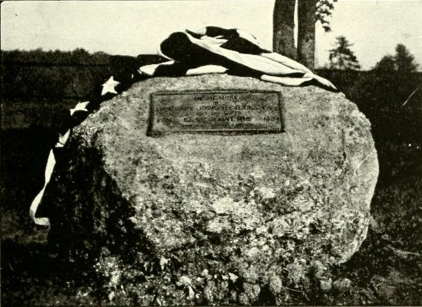 Cilley Burial Site
Cilley Burial Site
Also in 1901, the chapter marked the burial lot of Captain Joseph and Else Cilley with a boulder and bronze tablet. The old cemetery is located on the square, about 1/10 of a mile to the left of the Minuteman Monument, and sits back in the field.
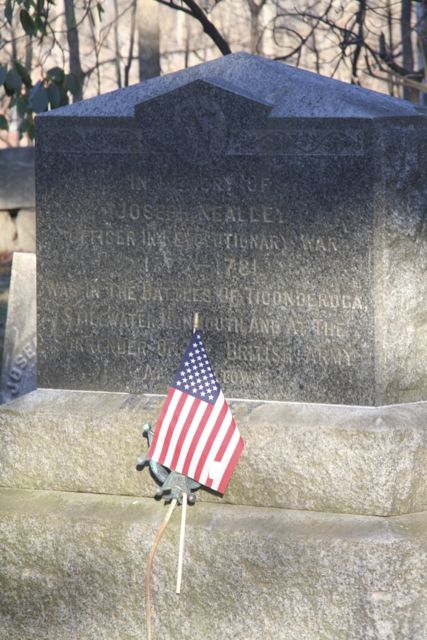 Nealley Family Markers
Nealley Family Markers
Regent Mary True Taylor (1901-1903) oversaw the placing of the Nealley markers in the Colonel Joseph Cilley Cemetery in Nottingham Square. Erected by descendants of Matthew Nealley, the markers commemorate the service of Joseph Nealley, officer in the Revolutionary War, who served in the battles of Ticonderoga, Stillwater, Monmouth, and at the Surrender of the British Army at Yorktown.
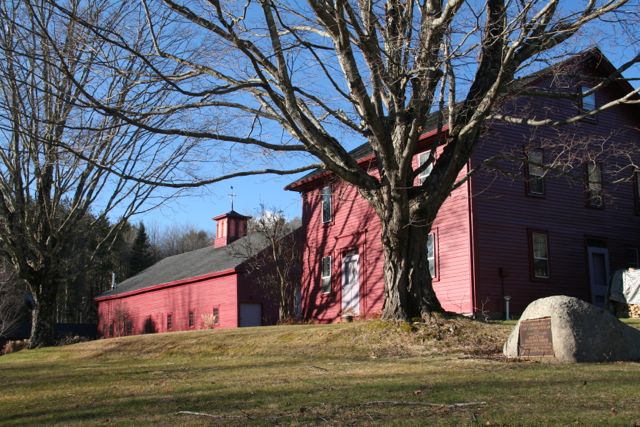 Site of Longfellow Garrison
Site of Longfellow Garrison
Under the regency of Mary Butler Cilley (1907-1918), the chapter placed a boulder and bronze tablet at the site of the Longfellow Garrison in Deerfield, New Hampshire. The plaque reads, "Site of garrison house built by Capt. Jonathan Longfellow in 1743. The farm paid for in slaves. Bought in 1765 by Major Simon Marston who served during the Revolutionary War, and since occupied by his descendants. Erected by the Else Cilley Chapter D.A.R. in 1909."
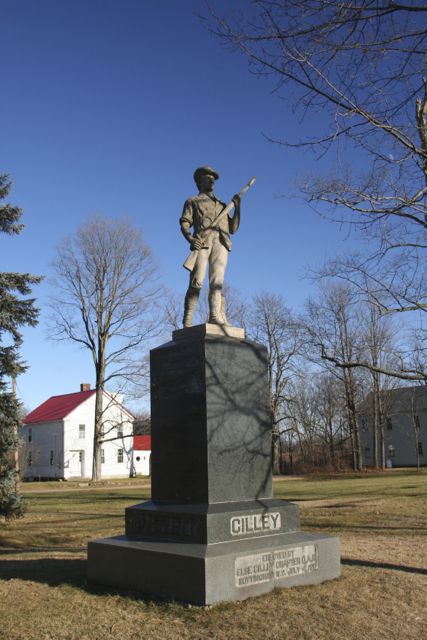 Minuteman Monument
Minuteman Monument
In 1917, the chapter erected the Minuteman Monument in Nottingham Square, on the site where the men mustered for their march to the Battle of Bunker Hill. Led by General Dearborn and General Cilley, the men marched from sunrise to sunset. The monument honors the four generals who went from the Square, Generals Dearborn, Cilley, Butler, and Bartlett. The monument was dedicated July 4, 1917.
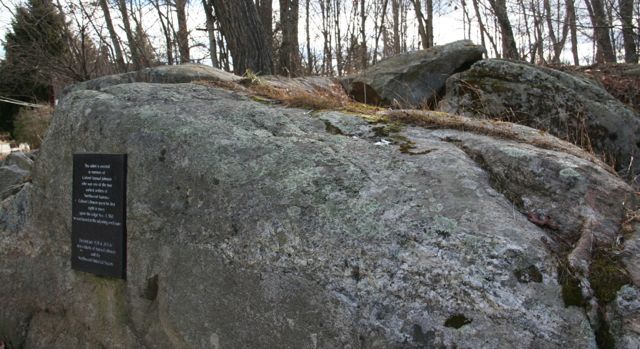 Northwood Narrows Settlement
Northwood Narrows Settlement
Under the regency of Mrs. Elizabeth W. (Cilley) Fernald (1918-1930), the chapter erected a tablet in memory of the first settler of Northwood Narrows, Colonel Samuel Johnson. Colonel Samuel Johnson spent his first night in town upon this ledge on November 1, 1765. This location was long known as "Old Camp." He is buried in the adjourning enclosure.
While the tablet was stolen in 2010, there is currently a similar marker in the original location, erected by the Northwood Historical Society and the descendants of Samuel Johnson in 2013.
 First Garrison House, Nottingham
First Garrison House, Nottingham
Also under the regency of Mrs. Elizabeth W. (Cilley) Fernald (1918-1930), the chapter unveiled a bronze tablet set into the stone curbing of the old garrison well in Nottingham Square. The garrison was constructed as protection from perceived hostility by the Indians. It was a dual-purpose structure and part of the building served as a meetinghouse. The inscription reads, "Site of First Garrison House, Nottingham Square, 1726, Erected by the Else Cilley Chapter, D.A.R., 1930." This well is located across the square from the Minuteman Monument.
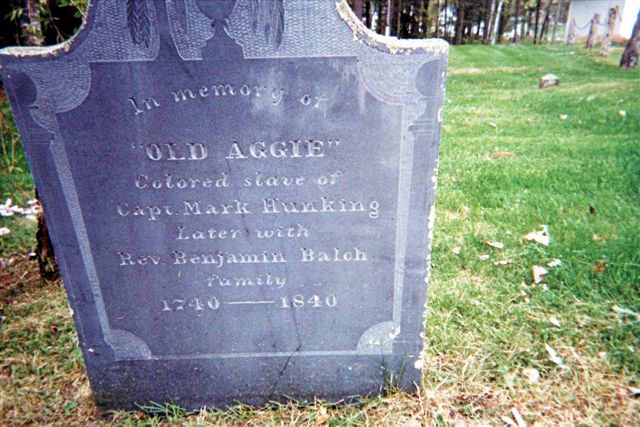 "Old Aggie"
"Old Aggie"
On September 17, 1930, under the regency of Mrs. Elizabeth W. (Cilley) Fernald, the chapter marked the grave of the last slave to die in New Hampshire. Captain Mark Hunking was one of the original settlers of Barrington. On a trip to the West Indies in 1750, he brought home a black girl who was about eleven years old. Aggie, as she was named, would reside with the Hunking family until the Captain's death in 1775. She spent the remainder of her days in Barrington.
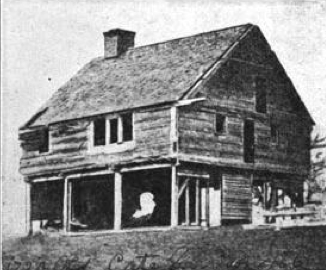 Cate Garrison
Cate Garrison
On October 15, 1933, regent Fernald also marked the site of the Cate Garrison in Barrington, New Hampshire. The tablet reads, "1720 - Old Cate Garrison - 1868." Constructed by Deacon William Cate, the garrison stood on Hardscrabble Hill near the town meeting house.
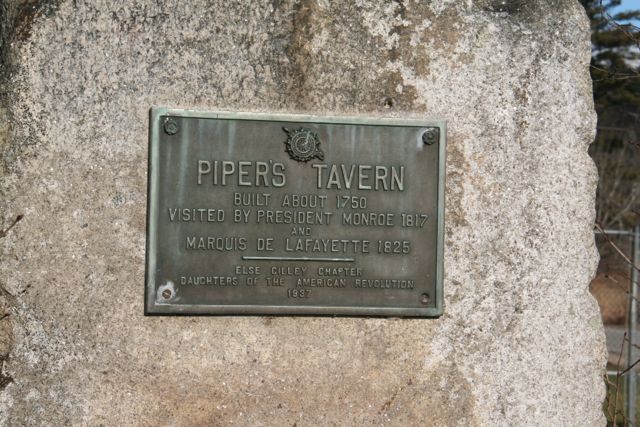 Piper Tavern
Piper Tavern
On June 3, 1937, the chapter erected a bronze tablet, placed on the site of the old Piper Tavern in Northwood, New Hampshire. The plaque reads, "Piper's Tavern, built about 1750. Visited by President Monroe 1817, and Marquis de Lafayette 1825. Else Cilley Chapter, Daughters of the American Revolution, 1927." At the time of the dedication, the tavern still stood. In 1963, the stone was moved. It now sits in the entrance to Coe Brown-Northwood Academy.
 Hunking Garrison
Hunking Garrison
Mrs. Fernald's last marking was that of the Mark Hunking Garrison on Calef Highway in Barrington, New Hampshire. The boulder and tablet, now situated across a busy highway facing Winkley Pond, is obscured. The tablet reads, "Near this site the Capt. Mark Hunking Garrison, 1750-1900. Also birthplace of Col. Daniel Hall. Placed by Else Cilley Chapter D.A.R., 1945."
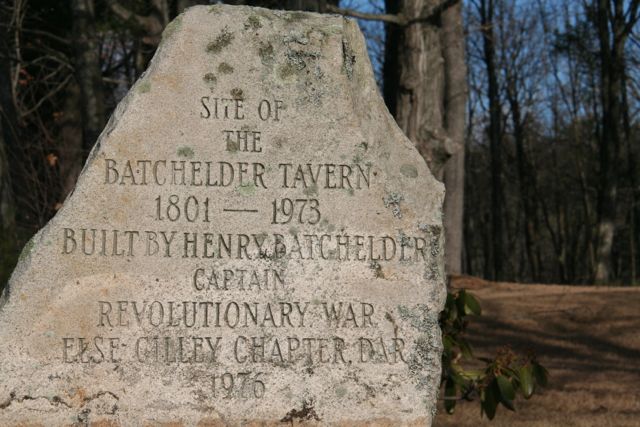 Batchelder Tavern
Batchelder Tavern
Under the regency of Sarah Potts Voll (1976-1980), the chapter marked the site of the Batchelder Tavern in Nottingham, New Hampshire. Located on Route 4 just past the academy, the tablet and marker read, "Site of the Batchelder Tavern, 1801-1973, Built by Henry Batchelder, Captain, Revolutionary War. Else Cilley Chapter, DAR, 1976."





